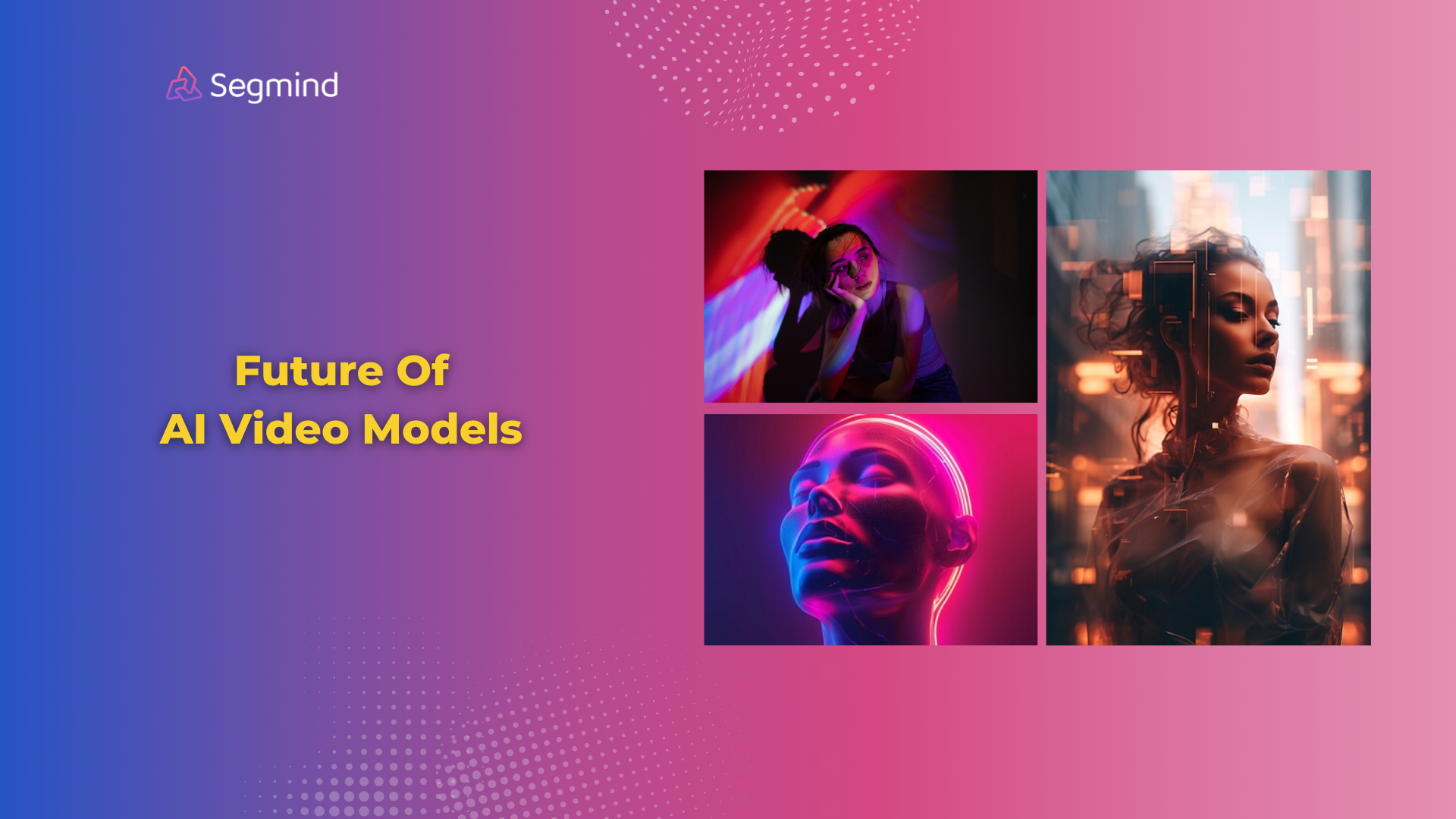Future Of AI Video Models And How Things Are Changing
Explore the latest developments in AI video models. Learn about the recent AI video models, their features, and explore more about the future AI video generation.

Creating high-quality videos used to require expensive equipment, and a complex setup. But now, AI video models can turn text or images into professional videos in just a few seconds. These tools make video creation possible for everyone, from social media creators to business owners.
Now, regular video creation still takes more time and effort. But the latest AI video models change this by automating the complex parts of video production while giving you full creative control.
How It All Started
Early AI models could only generate static images. Researchers then developed ways to add motion, starting with basic animations, and it kept on improving with time.
OpenAI's Sora marked a big moment in AI video creation. This model showed how AI could understand complex movements and physics, creating videos that look natural and flow smoothly. Other companies quickly followed with their own advances.
Each new model improved on what came before, adding better quality and more user control.
Features Of Generative AI Video Models
The latest AI video models offer several features that match professional video production tools. Let's look at what makes these models powerful:
Natural Motion:
Objects and people move naturally in the generated videos. A person walking looks real because the AI understands how bodies move. Water flows correctly, leaves flutter in the wind, and cars follow physics-based motion.
High Resolution:
Full HD 1080p output means your videos look sharp on any screen. This matches what viewers expect from professional content, whether on YouTube or Instagram.
Smart Editing:
Change scenes, adjust lighting, or modify movements without starting over. This saves hours compared to traditional video editing, where each change means re-shooting or complex editing.
Format Flexibility:
Create videos in any shape or size:
- Landscape for YouTube (16:9)
- Portrait for TikTok (9:16)
- Square for Instagram (1:1)
Each format automatically adjusts composition to look best in that space.
Length Options:
Make videos from 5 seconds to 2 minutes or longer. Shorter clips work for social media, while longer videos tell complete stories or explain complex ideas.
Latest AI Video Models
Runway Gen-3 Alpha Turbo
Ever since launched, Runway really surprised everyone with its highly realistic AI video generation capabilities. And ever since its first launch, Runway also released several updated versions, from Runway Gen-1, Gen-2, to now Gen-3 and even the Gen-3 Alpha Turbo model.
Runway's latest model transforms images into smooth videos at high speeds. You can turn a single photo into a 10-second video, with options to extend by 8-second segments. The system processes faster than earlier models while keeping quality high, making it practical for regular content creation.
The model accepts both text and image inputs. This flexibility means you can start with your own photos or describe what you want from scratch. Videos output at 1280 x 768 or 768 x 1280 resolution, fitting standard video formats. Check out Runway Gen-3 Alpha Turbo Model on Segmind.
Luma Dream Machine
Luma Dream Machine is another AI video generation model that stands out for its faster AI video generation capability. Luma focuses on making cinematic-quality videos from text or images. The system creates 120 frames in 120 seconds, giving you two full minutes of footage. Each frame maintains consistent quality and natural movement.
Camera control stands out in Luma's system. Type simple commands like "camera pan left" or "camera orbit" to create professional-looking shots. This makes complex camera movements accessible without technical expertise.
On Segmind, you get access to both text-to-video and image-to-video Luma models.
Kling AI
Kling AI specializes in natural movement and physics. Water flows correctly, fabric moves naturally, and objects interact properly. The system understands how things should move in the real world.
Through Segmind's platform, you get both text-to-video and image-to-video options for Kling AI Model. Start with a written description or add an image. The system handles aspect ratios from 16:9 to 1:1, matching any platform's requirements.
Uses Of AI In Video Generation
Marketing and Advertising:
Create product demos, social media ads, and promotional content quickly. Each video maintains brand consistency while saving production costs.
Education:
Turn lesson plans into engaging videos. Complex concepts become clearer through visual demonstration. Teachers save prep time while creating more engaging content.
Social Media Content:
Generate platform-specific videos that grab attention. Each piece fits perfectly on Instagram, TikTok, or YouTube without extra editing.
Learn More: How To Create A Faceless YouTube Channel With AI Videos
Product Demonstrations:
Show products in action without expensive photo shoots. Create multiple versions to test different approaches.
Future Trends And Possibilities In AI Video Generation
The AI video creation industry is growing rapidly with new tools and features.
Adobe has recently announced that they’ll expand Firefly’s capabilities now including video generation, bringing AI tools to millions of existing Adobe users.
Meta also launched their MovieGen, which focuses on realistic audio-visual sync, making videos with matching sound and motion.
So with all the recent developments, the future of AI video models definitely looks brighter and more promising. Here are some of the possibilities that we can further expect to come with all these recent developments:
1. Longer Videos
Current models create videos from 5 seconds to 2 minutes. New developments will extend these times to 5, 10, or even 15 minutes. This opens doors for:
- Full educational lessons
- Detailed product reviews
- Story-driven content
- Training videos
2. Enhanced Quality
Resolution keeps improving beyond 1080p. The next generation of models will offer:
- 4K output
- Higher frame rates
- Better color accuracy
- Sharper details
- More realistic textures
3. Advanced Controls
New tools give more precise control over video elements:
- Frame-by-frame editing
- Custom motion paths
- Detailed physics settings
- Advanced lighting controls
- Multi-camera angles
4. Smart Integration
Platforms like Segmind's PixelFlow show how AI tools can work together. Future developments in the field of AI video models will include:
- Combined image and video generation
- Automatic style matching
- Voice and music sync
- Real-time editing
- Custom model training
5. Specialized Tools
Different industries could get their own specialized video models:
- E-commerce product videos
- Real estate virtual tours
- Medical visualization
- Engineering simulations
- Sports analysis
Final Thoughts
AI video generation has evolved a lot from basic animations to professional quality content creation. The future of AI video generation is moving towards even more high-quality videos with better control and customization.
With the help of all these latest AI video models like Runway, Luma, Kling, and more, you can easily turn your ideas into videos, whether starting from normal text descriptions or existing images.
Segmind also offers the PixelFlow platform, with which you can combine multiple AI models and create your own custom workflow. And the best part is you don’t need any complex setup for it. Just with a drag-and-drop interface you can create and test different visual workflows and select the right one for your projects. Try now for free!

